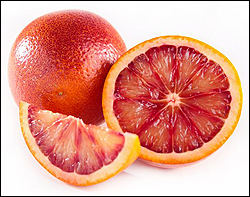
Most essential oils are thin in viscosity, meaning they are almost of a water-like consistency. Some steam distilled essential oils, namely patchouli and sandalwood, are thicker but still are relatively easy to work with. Some CO2s, absolutes, balsams, resins and other botanical aromatics, however, can be nearly solid at room temperature and are much harder to work with, measure and blend.
Heating oils until they are at a workable consistency helps, but it’s important to heat oils gently and for as brief a period as possible. Heat can potentially destroy the fragile constituents of particular oils.
When first working with a new oil, I begin by using a water bath technique: I gently heat the bottle or jar of oil by placing it in a small bowl of warm water, and then allow the bottle to rest in the warm water for 10 minutes or more. If the water cools, I replace the water. It is often a trial-and-error process, and each oil can differ in the precise temperature of warm water that works and the length of time that’s needed for the oil to reach a workable consistency. I also use this method for liquefying balsams and resins like benzoin. I have also used it to loosen hard vegetable butters from their containers for easier removal. Of course, you risk damaging the legibility of labels. If that matters to you, you can try applying a waterproof, clear tape to the label before submerging the container into water.
Sidenote: This water bath technique is also a useful technique for opening bottles that have tops that refuse to come off. Over time, my bottles of patchouli and vetiver can become difficult to open, especially if I’ve allowed any essential oil to drip onto the grooves of where the cap screws onto the bottle. I place the bottle, upside down, into a bowl of warm water and allow it to rest there for at least 15 minutes. Of course, this technique can risk allowing water to enter the bottle, but I haven’t experienced that problem yet.
Marge Clark is founder and President of nature’s gift and is one of AromaWeb’s largest advertisers and supporters. Marge is an expert in working with precious, rare and thick absolutes, CO2s and other aromatic oils. I asked her for her input in compiling tips in working with solid/thick oils, and she happily shared some especially helpful tidbits:
- Heat thick oils in warm water. Mentally imagine how baby bottles are gently warmed. If you are planning to blend the oil with a carrier oil, be sure to also warm the carrier oil. “Plunking a warm dollop of, let’s say Calendula Total into cold jojoba gives you jojoba with a blob of CO2 in it.”
- Marge discovered that using a triple boiler heating method rather than just using a double boiler helps, especially when heating a tiny bottle. Marge recommends placing the small bottle in a custard cup or tea cup with a small bit of warm water. Then set the small cup into a larger container of hot water.
- Even when warmed, it’s usually not possible or accurate to measure thick oils by the drop. Marge and I both measure thick oils by weight using a scale that weighs by the gram. Digital postal scales are one option if you happen to have one that measures in grams, but I tend not to use that type of scale for measuring tiny quantities. I prefer more accuracy, and use a pocket digital scale that can measure in fractions of a gram (I believe more formally referred to as centigramsand decigrams). Amazon
sells digital pocket scales, including the American Weigh Precision Digital Pocket Scale that has good reviews and is priced at $18.99 (at the time of this writing). (If this scale becomes discontinued, you can search Amazon for other scales by using the search term gram scales. ) Whatever scale you choose, be sure it has a tare function that lets you add an empty container and then set the scale to zero to then only weight what you put into the container. disclamer: AromaWeb receives a small commission if you click on these links and make a purchase (thanks!).
- Marge mentions that when diluting thicker oils in large amounts, it is sometimes better to add a tiny bit of the warmed carrier to the warmed (but still semi-solid) oil, stir until blended, add another dollop and repeat. She adds that her process is not much unlike making a sauce in her kitchen.
- Almost every absolute will dilute better in alcohol than in a carrier oil, and particular oils including some beeswax and cocoa absolutes will never dilute in carrier oils.
It happens to all of us that use thicker CO2s and absolutes: We have dropped, dripped and/or scooped out as much of the oil as we can, but we know there’s still a tad more left in the bottle. Using Marge’s techniques above, you can add alcohol or carrier oil (depending on the method of extraction) to the nearly empty bottle. and then enjoy using those last few drops by way of the dilution that you just created.
If you are in doubt or are having trouble working with a particular oil, contact the company that you purchased the oil from. They are most familiar with the particular oil that you purchased and should be quite experienced at working with it.
